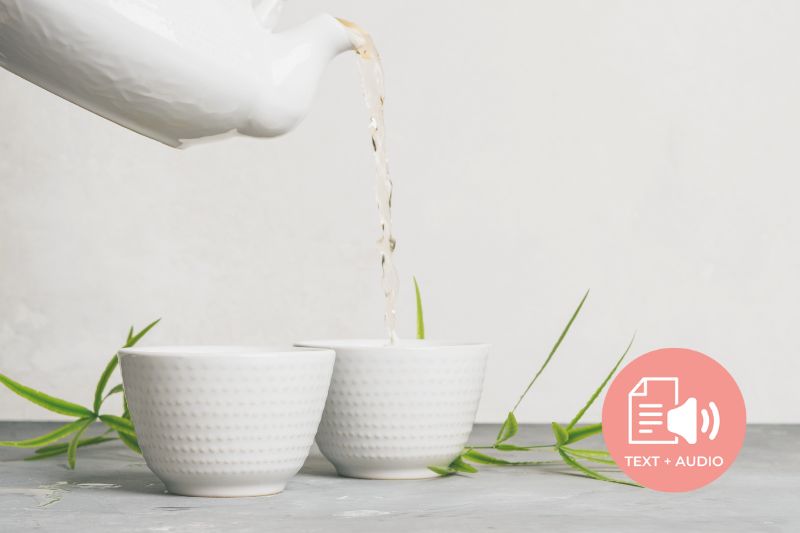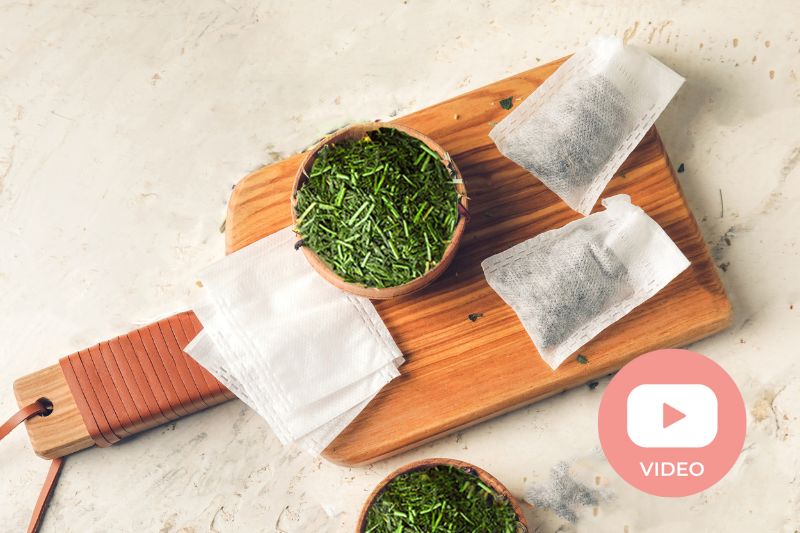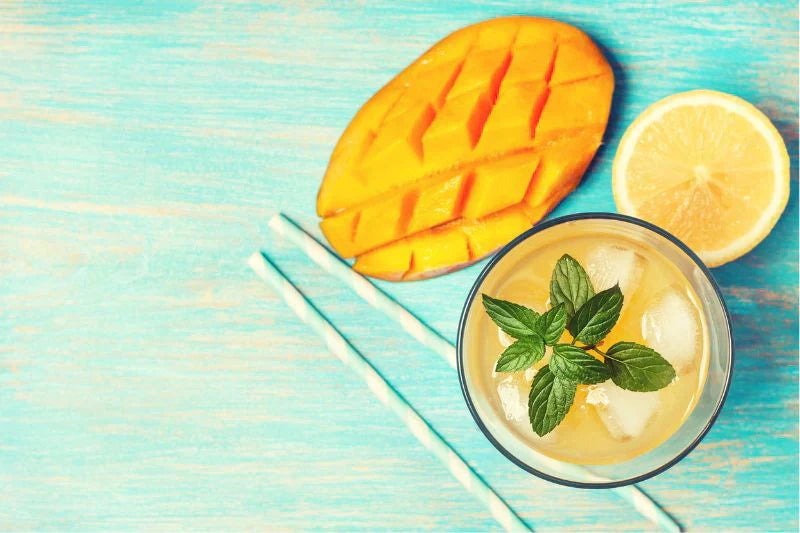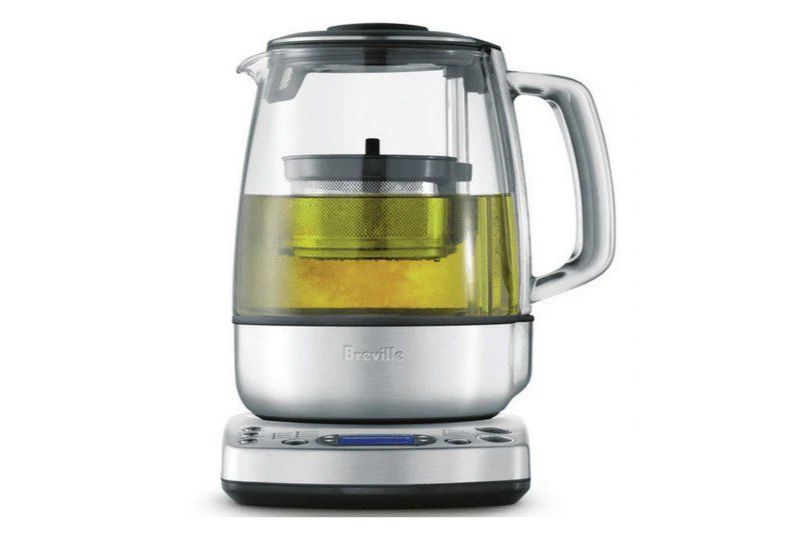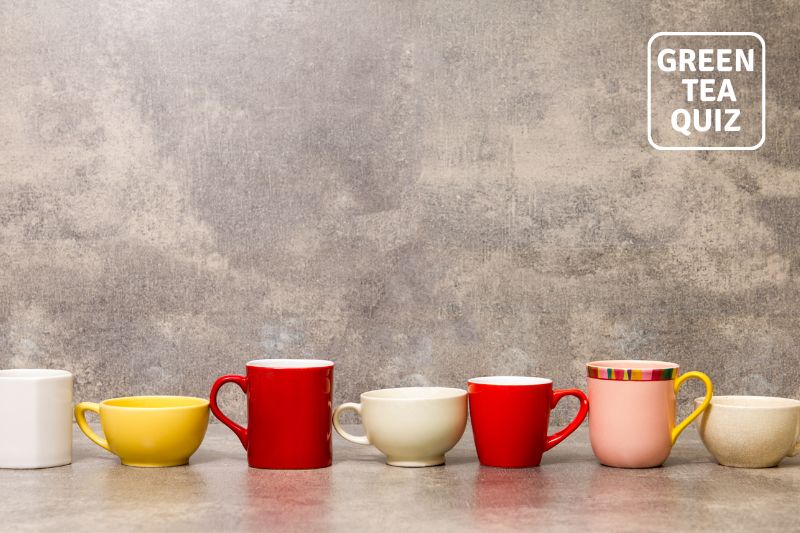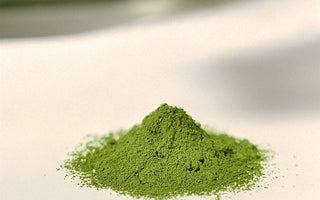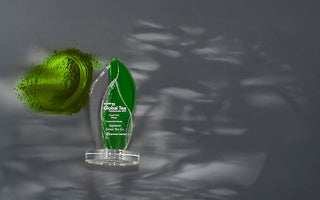If you’re a tea lover, why not try cold-brewing your next pot of Japanese green tea? Cold-brewing green tea might sound complicated if you haven’t tried it before, but it’s actually a simple process that results in a uniquely sweet, smooth tea.
Cold brewing also offers several unique health benefits that you won’t get if you brew your tea with hot water.
One of the standout features of cold-brewed Japanese green tea is its versatility. Whether you’re relaxing at home, heading to work, or enjoying a picnic, cold-brewed tea can be prepared in advance and stored in a portable bottle for convenience. This method also allows you to experiment with different types of Japanese green teas, such as sencha, gyokuro, or even bancha, each offering its own distinct flavor profile when brewed cold. By adjusting the steeping time or tea-to-water ratio, you can customize the strength and taste to suit your preferences, making cold brewing a delightful and creative way to enjoy your tea.
Keep reading to learn all about the process and benefits of cold-brewing Japanese green tea!
This article is for cold-brewing sencha loose-leaf green tea. If you want to learn more about cold-brew matcha (powder), click here. If you don't know the difference between sencha vs matcha, click here to find out!
What Makes Cold Brewing Different?
As the name implies, cold brewing means the tea is brewed with cold water instead of hot water.
One of the main differences between cold and hot brewing is that cold brewing takes quite a bit longer. While a cup of hot tea is ready to drink within five minutes, cold-brewed green tea must steep for several hours.
Although this long brewing time can be annoying if you want to drink your tea right away, you can get around the wait by making a large pot of cold-brewed tea before you go to bed and letting it steep overnight.
Then, you’ll be able to sip on the finished product throughout the next day!
Another key difference lies in the simplicity and flexibility of the cold brewing process. Unlike hot brewing, which often requires precise water temperatures to avoid scalding the tea leaves, cold brewing eliminates the need for a kettle or thermometer, making it an approachable method for beginners and seasoned tea drinkers alike. You can use everyday containers like a pitcher, a mason jar, or a traditional Japanese kyusu teapot.
Additionally, cold brewing is less likely to produce a bitter flavor, even if the tea leaves are steeped for extended periods, because cold water extracts fewer tannins—the compounds that cause astringency. This forgiving nature allows you to experiment with steeping times and tea quantities to create a personalized flavor profile, enhancing the enjoyment of Japanese green tea.
Health Benefits Of Cold Brew Green Tea
Even though it takes longer to cold-brew green tea, it’s worth the wait.
Tea brewed without any heat tastes different from traditional hot tea; it’s sweeter, smoother, and doesn’t have any of the bitter notes that you can sometimes taste in a cup of hot tea.
This is because cold water doesn’t extract tannins, the chemical responsible for that astringent taste, from the tea leaves. If you like to add sugar to your tea, you might be pleasantly surprised to find that cold-brewed green tea is already sweet enough on its own.
Cold-brewed Japanese green tea also offers a couple of distinct health benefits.
Moreover, the unique flavor profile of cold-brewed green tea makes it a versatile beverage that pairs well with various foods and occasions. Its naturally sweet and refreshing taste complements light meals, such as salads or sushi, and serves as a hydrating alternative to sugary drinks during warm weather.
The absence of bitterness also makes it an ideal choice for those who may find hot-brewed green tea too intense, allowing a broader range of people to enjoy the authentic taste of Japanese green tea. By choosing cold brewing, you not only enhance the sensory experience but also unlock a healthier, more enjoyable way to incorporate green tea into your daily routine.
Less caffeine
First, it contains less caffeine than tea brewed with hot water, which is good news if you’re trying to avoid the jitters.
Cold water doesn’t extract much caffeine from the leaves, so you can go ahead and drink a cup of cold-brewed green tea before bed because it won’t keep you awake. (Read more about caffeine and green tea in my other article.)
This reduced caffeine content makes cold-brewed green tea an excellent choice for those sensitive to stimulants or looking to enjoy tea throughout the day without disrupting their sleep patterns. Unlike hot brewing, which can extract a significant amount of caffeine in a short time, the slow cold-brewing process gently draws out flavors while leaving much of the caffeine behind. This characteristic also makes it suitable for children or individuals who prefer a milder tea experience, allowing them to savor the refreshing taste of Japanese green tea without the stimulating effects of higher caffeine levels.
More antioxidants
Second, cold-brewed green tea contains more antioxidants than hot tea.
According to a video posted by Dr. Michael Greger at NutritionFacts.org, a team of Italian researchers discovered that hot water destroys some of the catechins—the chemicals with antioxidant properties—in tea leaves. Conversely, cold water extracts those catechins without harming them. (Learn a lot more about catechins in this post.)
While any type of green tea is good for you, you’ll get more of its disease-fighting and anti-aging properties by choosing the cold-brewed variety.
This preservation of catechins makes cold-brewed green tea a powerful ally for health-conscious individuals. Catechins, such as epigallocatechin gallate (EGCG), are known for their ability to combat oxidative stress, support heart health, and potentially reduce the risk of chronic diseases.
By opting for cold brewing, you maximize these benefits, ensuring that each sip delivers a higher concentration of these protective compounds. This makes cold-brewed Japanese green tea not only a delicious choice but also a strategic one for boosting overall wellness and longevity.
(Read more about anti-aging and green tea in my other article.)
Cold Brewing Method 1: Using Cool Water
This method of cold brewing is called mizudashi (水だし), and it takes a while to steep—a minimum of three hours is recommended. However, the advantage of this method is that it works well for any grade of green tea. In fact, even cheaper green teas usually taste excellent when they’re brewed with cool water.
To make tea with this method, use a ratio of one to two tablespoons of tea leaves per quart of water. For a quick and convenient alternative, you can also use regular green tea bags.
Place the tea leaves in the bottom of a large container, or kyusu. (A kyūsu (急須) is a traditional Japanese teapot mainly used for brewing green tea.)
Then add the water, cover the container, and place it in the refrigerator to steep. When you're ready, give the finished pot a gentle swirl or stir before you drink it, since the stronger-flavored sediment may settle at the bottom during brewing.
My favorite way is to use a tea filter bag and loose-leaf green tea. Usually, higher-grade green tea is available in loose-leaf form and not teabag form. Here is a link from our store (or here is a link to Amazon to get one of these tea filter bags).
To get the most out of your tea leaves, you should let them sit in the refrigerator for at least three hours. But you can let it steep for up to twenty-four hours for a stronger brew if you want.
Unlike hot tea, cold-brewed tea won’t get bitter the longer you steep it. Therefore, many people like to let their tea steep overnight with this method so they can drink it in the morning.
If you keep it for more than one or two days, it gets too bitter, and the water starts to turn brown. With that in mind, it's best to take out the tea bag after 24 hours if you intend to keep it for longer than two days.
Question: Is it possible to reuse the tea leaves for multiple batches of cold green tea, or do you have to change the tea leaves for every batch?
Answer: I do not personally recommend it.
After 24 hours, the tea does not produce a good taste anymore as it has been soaked too long in the water.
Cold Brewing Method 2: Using Ice

This is another simple way to cold-brew green tea.
The advantage of this method is that it produces a tea with a very light, delicate taste. This steeping method works best for high-quality teas that are naturally flavorful, so you may want to use a good loose-leaf tea instead of a regular tea bag.
- To make cold-brewed green tea with ice, place one to two tablespoons of loose tea leaves in your pot or kyusu.
- Then, fill the pot the rest of the way with ice and let it sit undisturbed.
- When the ice has melted, your tea will be ready to drink.
- If you aren't using a kyusu, strain the leaves through a mesh sieve or cheesecloth before you serve the tea.
This ice-based method is particularly appealing for its minimal equipment requirements and ability to highlight the nuanced flavors of premium teas, such as high-grade sencha or gyokuro. As the ice slowly melts, it gently extracts the tea’s essence, resulting in a crisp, clean flavor profile that’s perfect for hot summer days or as a refreshing palate cleanser. For an enhanced experience, consider using filtered water to make the ice, as it can further elevate the tea’s clarity and taste. This method also allows for easy portion control, as you can adjust the amount of tea leaves and ice to suit your desired strength.
Here is an Instagram video of my good friend >Danielle from Tea & Me Blog doing this cold-brewing using our Gokuzyo Aracha Sencha Tea!
Cold Brewing Method 3: Cooling Hot Tea

Cold brewing can be a lengthy process. But if you're impatient to drink your tea, you can just brew a quick cup of hot green tea and then cool it with ice. This method works equally well with loose-leaf tea and tea bags.
One thing to keep in mind, however, is that the ice will water down the tea, so you may want to make your tea stronger than you normally would. Try doubling the number of tea leaves you use or using two tea bags instead of one.
This method is ideal for those who want the convenience of cold tea without the wait time of traditional cold brewing. By brewing the tea hot first, you can extract flavors quickly, and the addition of ice rapidly brings it to a refreshing temperature.
To further enhance the experience, consider brewing the tea in a heat-resistant container and chilling it in the refrigerator for a few minutes after adding ice to ensure an even, cool temperature without excessive dilution. This approach also allows you to experiment with different tea varieties, such as bancha or hojicha, which can offer unique flavors when cooled, making it a versatile option for spontaneous tea enjoyment.
Simple Japanese Green Tea Soda (炭酸割り)
Rather than steeping the entire hot tea, follow the steps below to make refreshing Japanese green tea cold brew soda.
- Pour hot water over loose-leaf green tea with 1/4 of the amount of hot water you would use in method three above. (Just enough to cover the leaf is good enough.)
- Wait for 1-3 minutes. At this point, you have very thick green tea since you used very little hot water in step one above.
- Now pour club soda or carbonated water of your choice over the tea prepared in steps one and two. (My personal favorite is Perrier; their lime version goes surprisingly well with sencha green tea.)
- Filter it out and add ice. If you wish, add a sweetener of your choice (honey, sugar, etc.). Check out this article for 10 ways to sweeten Japanese green tea.
- Use a high-quality sencha or gyokuro for a more vibrant flavor, as their natural sweetness complements the carbonation beautifully.
- Experiment with different carbonated waters, such as flavored sparkling water (e.g., lemon or grapefruit), to create unique flavor combinations.
- For a stronger tea base, increase the amount of loose-leaf tea slightly while keeping the water minimal to maintain the concentrated flavor.
- Garnish with a slice of citrus (like lemon or lime) or fresh mint leaves to enhance the visual appeal and add a refreshing twist.
- Serve in a chilled glass to keep the soda crisp and refreshing, especially on warm days.
This simple step makes a very healthy cold-brewed green tea soda. Pretty cool, isn't it? You can do the same trick with matcha, too. Click here for the matcha version. (It's a little different, but the concept is the same.)
Bonus Notes on Cold Brew Green Tea
Don’t throw out those tea leaves after you make a pot of cold-brewed green tea!
Most tea leaves can be used more than once, especially if you’re not using hot water. But keep in mind that your second pot of tea may have a lighter flavor than the first. If you are using a kyusu, it will filter the loose-leaf tea for you. If not, you can strain the tea through cheesecloth or a fine-mesh sieve to remove the leaves.
Some people like to brew two batches of tea with the same leaves and then mix them together. The different flavors of the two brews combine to produce a well-rounded cup of tea. Experiment with your brews to see what you like best.
If you’re interested in expanding your tea horizons, make cold-brew green tea the next thing on your to-do list. A cold-brewed cup of Japanese green tea makes a delightful morning ritual or afternoon pick-me-up, and it’s healthier than regular hot tea, too.
Additionally, cold-brewed tea leaves can be repurposed in creative ways to maximize their use. For example, used tea leaves can be added to compost for gardening, as they are rich in nutrients that benefit soil health. Alternatively, you can dry the leaves and use them as a natural deodorizer in your refrigerator or shoes.
For culinary enthusiasts, incorporating used green tea leaves into recipes, such as sprinkling them into salads or blending them into smoothies, can add a subtle tea flavor and a boost of antioxidants. These sustainable practices not only reduce waste but also enhance your cold-brewing experience by making it more versatile and eco-friendly.
Why not try making your first cold-brewed pot of tea today?
This article was first published in 2017, and it was updated in 2021 just for you.
Buy Green Tea Good for Cold-Brewing
Here is a list of the best-selling Japanese green teas good for cold brewing from the Japanese Green Tea Company. Try it out today to enjoy tasty and healthy Japanese green tea!
Option 1. Using Loose Leaf Sencha Green Tea: This is an economical and high-quality green tea that is popular for cold-brewing.
Option 2. Using Tea Bags: Use 2-3 tea bags per 1 jar (one liter of water).
More Premium Japanese Green Tea On Sale
• Disclosure: I only recommend products I would use myself, and all opinions expressed here are my
own. This post may contain affiliate links that I may earn a small commission at no additional cost to you.
The commission also supports us in producing better content when you buy through our site links.
Thanks for your support.
- Kei and Team at Japanese Green Tea Co.
Get Free Bonus Books

Sign up for free to the Green Tea Club to get advice and exclusive articles about how to choose Japanese Tea, and tips, tricks, and recipes for enjoying Japanese tea.
About the author
Kei Nishida
Author, CEO Dream of Japan
Certification: PMP, BS in Computer Science
Education: Western Washington University
Kei Nishida is a passionate Japanese green tea connoisseur, writer, and the founder and CEO of Japanese Green Tea Co., a Dream of Japan Company.
Driven by a deep desire to share the rich flavors of his homeland, he established the only company that sources premium tea grown in nutrient-rich sugarcane soil—earning multiple Global Tea Champion awards.
Expanding his mission of introducing Japan’s finest to the world, Kei pioneered the launch of the first-ever Sumiyaki charcoal-roasted coffee through Japanese Coffee Co. He also brought the artistry of traditional Japanese craftsmanship to the global market by making katana-style handmade knives—crafted by a renowned katana maker—available outside Japan for the first time through Japanese Knife Co.
Kei’s journey continues as he uncovers and shares Japan’s hidden treasures with the world.
Learn more about Kei









